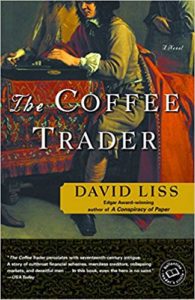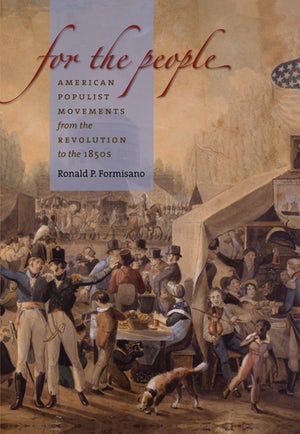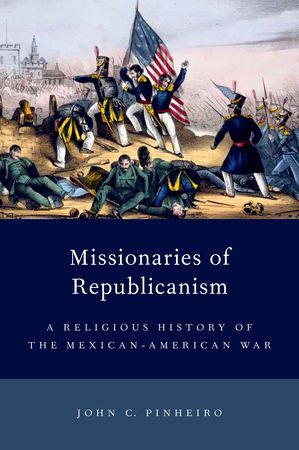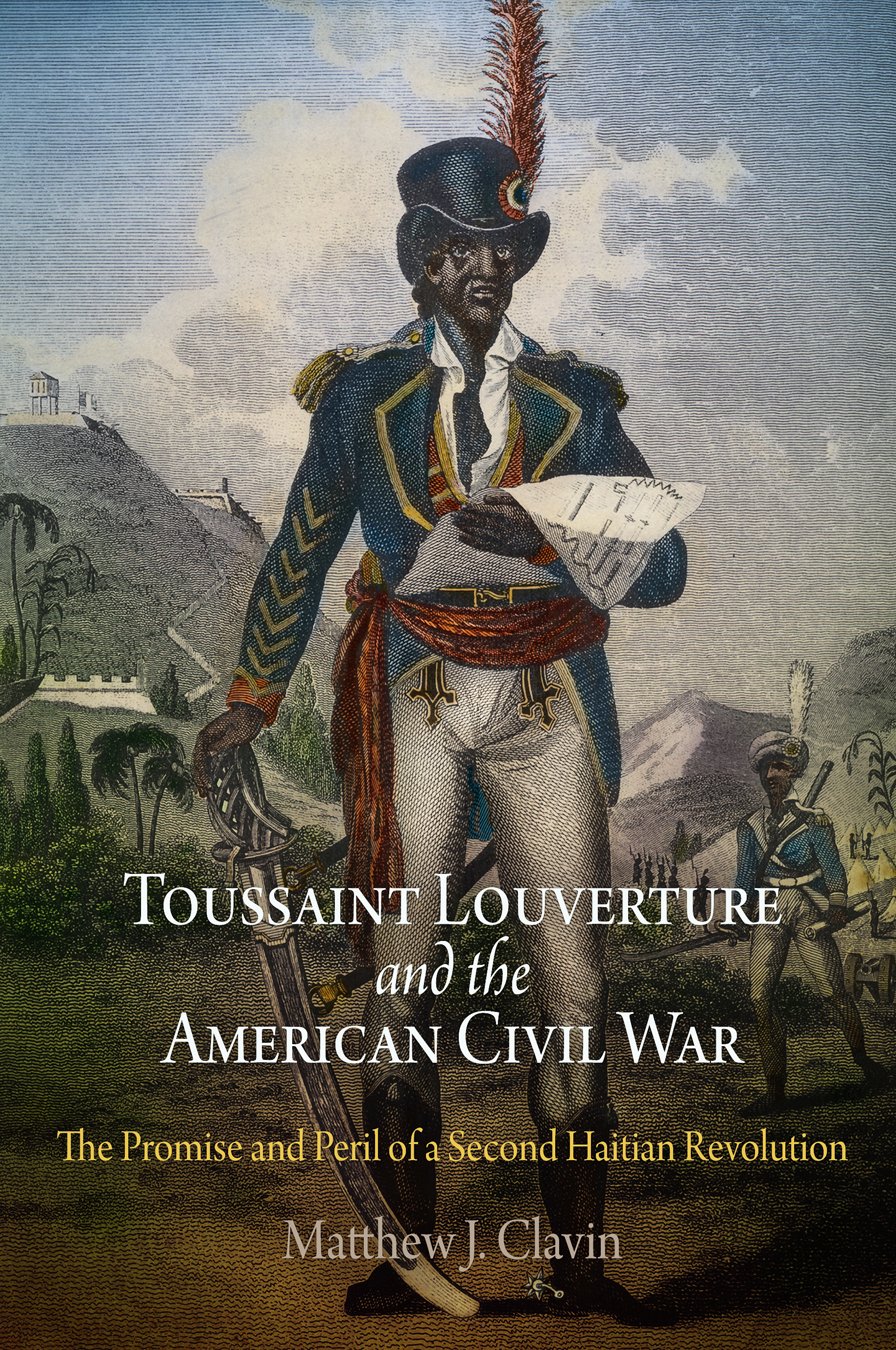Commenting on the process through which he came to write his first novel, David Liss wrote: “After years in the archives, reading pamphlets, poems, plays, periodical essays, and long-forgotten novels, I failed to find the source that told me precisely what I wanted to know about the new finance [of the early eighteenth century]. So I wrote one.” The result was A Conspiracy of Paper, a novel of financial intrigue set in London on the cusp of the bursting of the South Sea Bubble in 1720. Liss returns to this sort of historical fiction with his second novel, The Coffee Trader. He sets the tale in mid-seventeenth-century Amsterdam, apparently around the year 1659, when the Dutch Republic had secured its independence from Spain and was enjoying the height of its own golden age. Along with recent novels by Iain Pears and Ross King, Liss has contributed to the development of a minor new subfield in recent fiction writing that one might be tempted to call Baroque Noir. The mystery novel, with its intricate plotting and themes of deceit and manipulation, has found a comfortable backdrop in the world of early modern Europe, a period itself rich in intrigue and colorful characters.
For Liss, the appeal of the Baroque milieu seems to be the opportunity it offers to present a look at the mental world of financial capitalism at a time in which its major practices and institutions were still very new. National banks, international trading conglomerates such as the Dutch East India Company, the stock market, futures trading, and financial journalism were all innovations of the era and they were greeted with even more suspicion at their inception than they are in the current climate of financial scandals associated with names like Enron, WorldCom, and Martha Stewart. The Coffee Trader introduces its readers to this world through a variety of different players in the early modern Dutch financial markets. The protagonist, a Portuguese Jew named Miguel Lienzo, attempts to maintain his financial security in the Dutch Exchange and his social standing in the Amsterdam Sephardic Jewish community. In doing so, he encounters a number of different characters from both inside and outside of the Jewish community. As with any good mystery, the reader is kept guessing as to who Miguel’s true friends and enemies are until all is revealed in what amounts to a rather bittersweet conclusion.
As straightforward fiction, the novel is a compelling tale filled with the interesting twists and turns of fortune that one might expect from the genre. But it is as a work of historical fiction that the novel really excels. Liss has a keen ear for dialogue and while he spares his readers the excesses of the Baroque vocabulary and speech styles, he does well to capture the religious, class, and gendered prejudices that structured the early modern mind. Observant readers will catch clever references to the great culture heroes of the Dutch golden age, such as the painter Rembrandt van Rijn, who is identified as “that curious fellow who had lived in the Vlooyenburg and was in the habit of paying poor Jews to model for him” (308). While one might quibble with one of the major plot devices, an historically implausible attempt by Miguel Lienzo and his business partner to achieve a general European monopoly in the coffee market, the novel is generally filled with clever insights into the workings of the multicultural society of early modern Amsterdam. It captures effectively the personal face of the early modern financial marketplace. In doing so, Liss offers a fictional counterpart to the story that social and economic historians have begun telling us in their studies of the importance of systems of credit, notions of credibility, and the social networks of trust and reliability that were the necessary foundations for the functioning of an international commodities market.
As with his first novel, Liss is particularly concerned to detail the predicament that the communities of the post-Inquisition Jewish diaspora found themselves in after their expulsion from the Iberian peninsula. Miguel Lienzo was born in Lisbon to a converso or “New Christian” family that subsequently moved to Amsterdam after their father fell victim to the Inquisition. In the new Dutch Republic, the Portuguese Jewish community found a receptive home in which they could practice their religion with relative freedom. They also found an opportunity to exploit their international kinship and religious networks, stretching from the Levant to London and the North Sea, in the service of international trade, especially the commerce with the Iberian Americas, such as the Brazilian sugar trade and the Curaçao chocolate trade. Liss places his Miguel Lienzo in the midst of this world and presents the character with the opportunity to strike up a trade in what was still in the mid-seventeenth century a relatively unknown commodity–coffee.
The early history of the coffee trade is much less researched than the economic role of the Sephardim in the Dutch golden age, but the picture Liss presents in his novel is plausible, if not yet documented by historians. There is no evidence for a significant Jewish presence in the early coffee trade in England, and a recent study of the history of coffee in the Netherlands has concluded that although the coffeehouses of the Dutch Republic were often kept by Jews, Armenians, Greeks, or Italians, the major coffee merchants were of Dutch extraction. But the Sephardic community was indeed entrenched and influential in the Dutch commodities market. By the late seventeenth century, chocolate dominated Sephardic trading activities on the Amsterdam Exchange. Had Liss followed up on his initial plan to write about Jewish involvement in the chocolate trade, he might have been able to construct a story closer to the heart of the economic life of the Amsterdam Sephardim. He chose coffee instead because he claims “coffee and business go together so naturally that the switch was inevitable” (386). There is another story to be told here. Why do coffee and business seem to go together so naturally?
We do not get much of an answer to this question in Liss’s novel aside from the customary association between the stimulative properties of caffeine and the need for businessmen to remain sober and alert in all of their transactions. This sort of functionalist argument might make sense to us today, but it was less clear to seventeenth-century people who were confronted with a new commodity whose psychotropic properties had yet to be fully socialized. By the dawn of the eighteenth century, coffee and commerce did indeed fit together rather well, so well in fact that it has come to be seen as “natural.” In the meantime, there was quite a lot of persuasive work to be done in order to make coffee seem like a sober and rational drink rather than a foreign and threatening one.
Historians will continue to want to dig around in the archives, read long-forgotten pamphlets and treatises and think about the history of coffee in order to understand how it became so widely accepted in early modern Europe. In the meantime, The Coffee Trader offers an entertaining entrée into the cultural world of Sephardic Jewry in mid-seventeenth-century Amsterdam. For those who wish to continue to read further, the book includes a judicious bibliography of some of the best works in English on Dutch and Sephardic culture in the golden age.
Further Reading: The opening quote is found in David Liss, A Conspiracy of Paper: A Novel (New York, 2000), 438; other examples of ‘Baroque noir’ novels include: Iain Pears, An Instance of the Fingerpost (London, 1997) and Ross King, Ex-Libris (New York, 2001). Two excellent recent examples of the history of credit and credibility are Nuala Zehediah, “Making Mercantilism Work,” Transactions of the Royal Historical Society 9 (1999): 143-58, and Craig Muldrew, The Economy of Obligation: The Culture of Credit and Social Relations in Early Modern England (London, 1998). The standard work on the history of Dutch coffee is Pim Reinders and Thera Wijsenbeek, eds., Koffie in Nederland: Vier Eeuwen Cultuurgeschiedenis (Delft, 1994). The Sephardic dominance of the chocolate trade is revealed in Jonathan Israel, Empires and Entrepots: The Dutch, the Spanish Monarchy and the Jews 1585-1713 (London, 1990), 440. The legitimation of coffee and coffeehouses in the British Isles will be the major theme of my forthcoming book: The Social Life of Coffee: Curiosity, Commerce and Civil Society in Early Modern Britain.
This article originally appeared in issue 4.1 (October, 2003).
Brian Cowan is assistant professor of history at Yale University and the author of The Social Life of Coffee: Curiosity, Commerce and Civil Society in Early Modern Britain (New Haven and London, forthcoming).



















